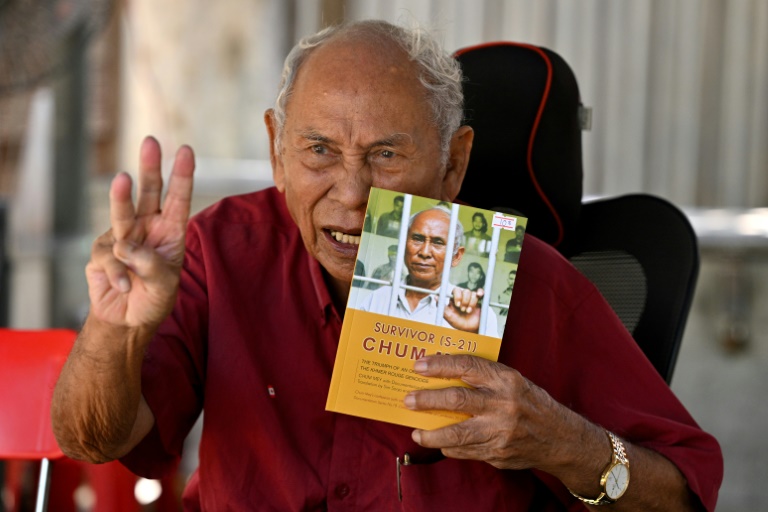A Historic Recognition for Sites of Tragedy
Survivors of Cambodia’s four-year genocide expressed deep emotions on Saturday, as they shared their joy that the site of their most harrowing experiences has received UNESCO recognition. This acknowledgment highlights the historical significance of three key locations used by the Khmer Rouge regime to carry out its brutal actions 50 years ago.
On Friday, these three sites were officially inscribed on UNESCO’s World Heritage List. One of them, the Tuol Sleng Genocide Museum in the capital city, was once a high school that transformed into a notorious prison known as S-21. It is estimated that around 15,000 people were imprisoned and tortured here.
Chum Mey, one of the few survivors of S-21, shared his feelings of excitement about the recognition. He now sells his memoirs within the prison compound where he endured severe beatings, electrocution, and starvation. For him, the UNESCO listing serves as a painful reminder of the torture he faced. “I am so thrilled,” he said, emphasizing the importance of remembering the past.
The other two sites recognized by UNESCO are the Choeung Ek Genocide Centre, also located in the capital, and M-13, a site situated in a rural area of central Kampong Chhnang province. These places stand as solemn reminders of the atrocities committed during the Khmer Rouge era.
Chum Mey expressed his happiness and excitement about the international recognition of Tuol Sleng, Choeung Ek, and M-13. He believes this recognition will be valuable for future generations, ensuring that the lessons of the past are not forgotten.
Between 1975 and 1979, an estimated two million people perished due to starvation, forced labor, torture, or mass killings. On Saturday, students and tourists visited the Tuol Sleng site, walking through black-and-white mugshots of victims and examining the preserved equipment used by the Khmer Rouge tormentors.
A Lesson of Life
Khuon Sovann, who lost over ten relatives during the genocide, shared her emotional experience at the site. The 82-year-old and her older sister offered food and water in front of an inscription bearing the names of the victims, praying for her late brother-in-law. She described the UNESCO listing as “good” and believed it would help preserve the site for future generations.
The Cambodian culture ministry highlighted the significance of the inscription, stating it acknowledged the country’s efforts in transforming a land once ravaged by war and genocide into a place of peace and dignity.
Norng Chanphal, 55, survived S-21 as a child and returns to the site daily to sell his memoirs and connect with the memory of his mother, who died there. He expressed his happiness and excitement about the UNESCO recognition. For him, the site represents a bitter memory where many lost everything, but it also serves as a reminder to prevent such a regime from ever happening again in Cambodia.
Norng Chanphal emphasized that the site is a lesson of life for people around the world, helping them understand the horrors of the regime. He believes the UNESCO recognition offers some justice to the souls of his mother and other victims of Tuol Sleng, ensuring their stories are remembered and honored.







